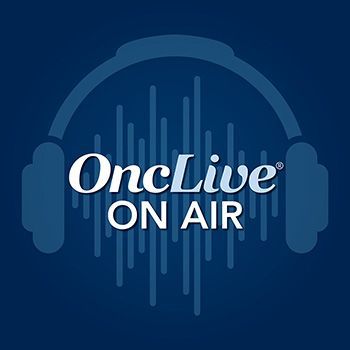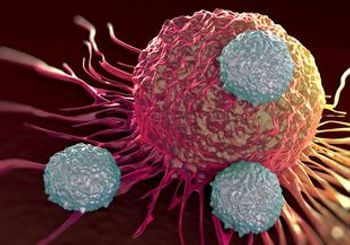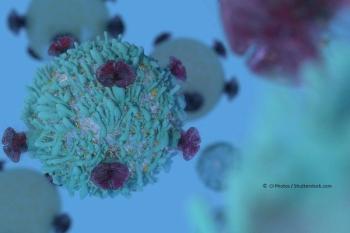
Multiple gene signature assays have been developed that supply prognostic information for decisions on adjuvant chemotherapy and whether therapy should be of extended duration.

Multiple gene signature assays have been developed that supply prognostic information for decisions on adjuvant chemotherapy and whether therapy should be of extended duration.

Cellular therapies have the potential to make a meaningful difference for patients with neurological disorders, if used correctly.

Tisagenlecleucel's high price is aligned with the benefit the chimeric antigen receptor T-cell therapy provides over a patient's life. Approximately 40% of patients treated are expected to be long-term survivors.

We visited San Francisco, California for a State of the Science Summit on Hematologic Malignancies. The meeting covered novel agents and combinations in lymphoma, updates in acute and chronic leukemias, and modalities in the management of multiple myeloma.

Nina Shah, MD, discusses the present and future of chimeric antigen receptor T-cell therapy in myeloma.

Investigators are evaluating whether eryaspase (Graspa), an L-asparaginase-based therapy that triggers tumor cell death, can extend survival for patients with pancreatic cancer.

Brian Till, MD, discusses the rapidly evolving field of chimeric antigen receptor (CAR) T cells.

In a small trial, the AAVrh74.MHCK7.micro-dystrophin therapy has shown high levels of transduced micro-dystrophin expression.

Charalambos (Babis) Andreadis, MD, MSCE, discusses the use of CAR T-cell therapy in patients with DLBCL and the associated toxicities with each product, as well as other promising therapies in the paradigm.

We visited Chicago, Illinois for a State of the Science Summit on Renal Cell Carcinoma and Bladder Cancer. The meeting covered the genomics of bladder cancer, novel approaches to non-muscle invasive bladder cancer, side effect management from immunotherapy, as well as the integration of immunotherapy, chemotherapy, and targeted therapy in genitourinary cancers.

Improvements in chimeric antigen receptor (CAR) T-cell therapy, approved last year by the FDA for leukemias and lymphomas, were a focus of a session by a National Cancer Institute (NCI) researcher who spoke at the CRI-CIMT-EATI-AACR International Cancer Immunotherapy Conference taking place in New York City this week.

A single leukemia cell was able to reproduce and cause a deadly relapse of pediatric B-cell acute lymphoblastic leukemia (ALL) after it had bonded with the leukemia-targeting chimeric antigen receptor (CAR) lentivirus and infused back into a patient. The case of the cell that became resistant to CAR T-cell therapy was published in the journal Nature Medicine Monday.

Loyola University Chicago and Loyola Medicine announced plans this week to develop their own chimeric antigen receptor T-cells that would have less toxic side effects.

Lurbinectedin plus doxorubicin demonstrated significant clinical activity as a second-line therapy for patients with small cell lung cancer, especially when excluding refractory patients.

With the planned submission of an IND for the first AAV gene therapy for the rare genetic condition, some experts are wondering if things are moving too quickly.

Abhinav Deol, MD, discusses the basics of chimeric antigen receptor T-cell therapy, potential new directions for these products, and the possible impact new products might have on the field.

Eric Smith, MD, PhD, discusses the development of novel CAR T-cell therapies for patients with multiple myeloma.

ONCOLOGY spoke with Eric Ko, MD, PhD, who recently published a review article with his colleagues on strategies for combining radiation therapy with immunotherapy for the treatment of non–small-cell lung cancer.

Deepu Madduri, MD, discusses the role of CAR T-cell therapy and other novel treatment options for patients with relapsed/refractory multiple myeloma.

Frontline therapy may be able to be avoided in asymptomatic, young, fit patients with mantle cell lymphoma.

A recent report from the National Comprehensive Cancer Network (NCCN) investigated the current state of chimeric antigen receptor (CAR) T-cell therapy and future strategies to consider as the novel immunotherapy evolves and is used in the treatment of more patients.

While clinical trial findings with chimeric antigen receptor (CAR) T-cell therapy have impacted the landscape of pediatric acute lymphoblastic leukemia, additional CAR T-cell products continue to be investigated.

The FDA has approved moxetumomab pasudotox for the treatment of adult patients with relapsed or refractory hairy cell leukemia following at least 2 prior lines of therapy.

Antiretroviral therapy and rituximab show promise in aids-related diffuse large B-cell lymphoma patients.

Kenneth H. Shain, MD, PhD, discusses the evolution of treatment for patients with newly diagnosed multiple myeloma and how physicians are leveraging data with chimeric antigen receptor T-cell therapy and minimal residual disease negativity to improve outcomes.

Frederick L. Locke, MD, discusses the expansion of CAR T-cell therapy in patients with lymphomas following the 2017 approval of axicabtagene ciloleucel and remaining research questions with the therapy.

We headed to Tampa, Florida for a State of the Science Summit on Hematologic Malignancies. The meeting covered updates in follicular lymphoma, chronic lymphocytic leukemia, mantle cell lymphoma, multiple myeloma, acute lymphoblastic leukemia, chronic myeloid leukemia, acute myeloid leukemia, myeloproliferative neoplasms, and CAR T-cell therapy.

One patient saw a complete response, and the therapy was well tolerated, especially compared with the adverse effects sometimes seen with chimeric antigen receptor (CAR) T-cell treatment in blood cancers thus far.

Recent studies on CAR T-cell immunotherapy, and the recent approval of a new agent, add to evidence supporting the efficacy of these therapies.

The FDA has granted a fast track designation to FCX-013, a gene therapy for the treatment of patients with moderate to severe localized scleroderma.